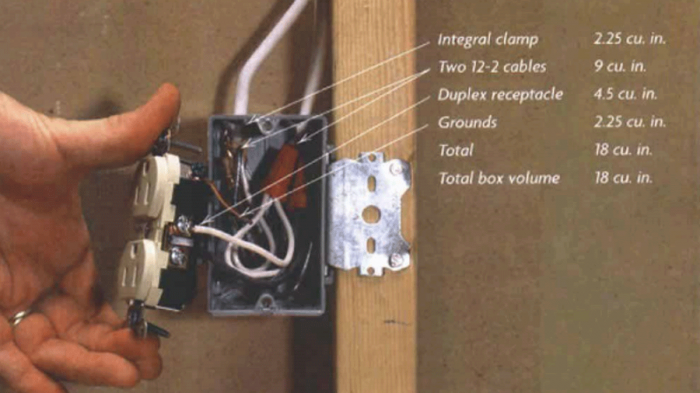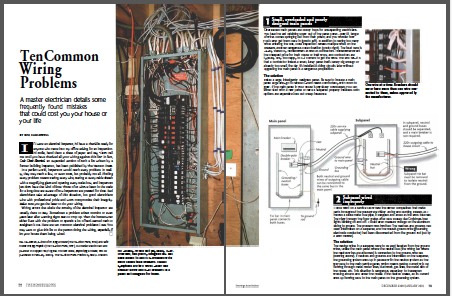10 Common Wiring Problems
These frequently found mistakes could cost you your house or your life.

Synopsis: A master electrician identifies 10 wiring problems, from improperly wired receptacles to undersized and overloaded main panels, that commonly crop up in residential construction. Most are potential safety hazards.
If I were an electrical inspector, I’d have a checklist ready for anyone who came into my office asking for an inspection. I’d smile, hand them a sheet of paper and say, “Don’t call me until you have checked all your wiring against this list.” In fact, Code Check Electrical, an expanded version of such a list written by a former building inspector, is published by The Taunton Press and is now in its eighth edition.
In a perfect world, inspectors would catch every problem. In reality, they may catch a few, or even most, but probably not all. Finding every problem means tracing every wire, staring at every cable sheath with a magnifying glass and opening every outlet box, and inspectors just don’t have that kind of time. Those of us who’ve been in the trade for a long time are aware of how inspectors are pressed for time. Bad electricians take advantage of this situation, but good electricians wire with professional pride and won’t compromise their integrity. Make sure you get the latter to do your wiring.
Wiring errors that elude the scrutiny of the electrical inspector are usually there to stay. Sometimes a problem arises months or even years later after warning signs start to crop up. Then the homeowner either lives with the problem or spends a lot of hard-earned cash to straighten it out. Here are ten common electrical problems I see. You may want to give this list to the person doing the wiring, especially if it’s your house that’s being wired.
Small, overloaded and poorly designed main panels
Overloaded main panels are booby traps for unsuspecting electricians. You take the last retaining screw out of the panel cover — pow! A tangle of wires comes springing out from their prison, and you wonder how you’ll ever get them back in. In addition to having too many wires entering the box, close inspection reveals multiple wires on the breakers, another dangerous code violation. The fault here is usually shared by homeowners as well as contractors. Homeowners want the cheapest price for their house or their work, and contractors are typically only too happy to cut corners to get the work. The end result is that a contractor installs a small, junky panel that’s barely big enough or already too small the day it’s installed. Adding circuits later without upgrading the main panel is a dangerous proposition.

From Fine Homebuilding #136





